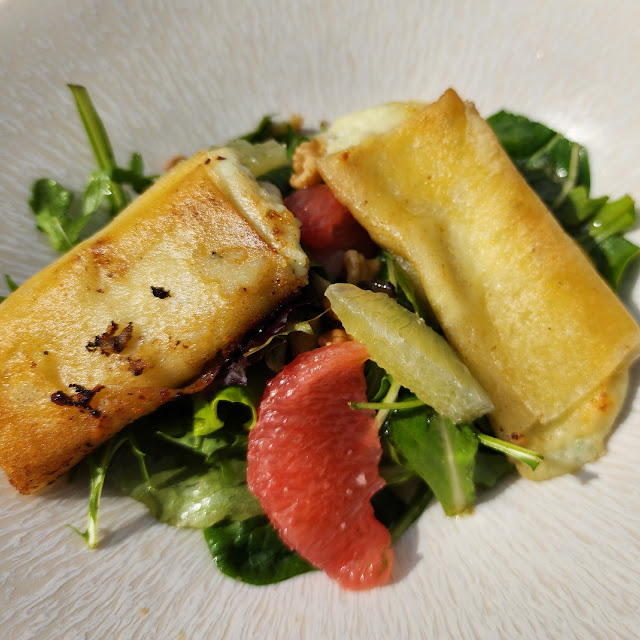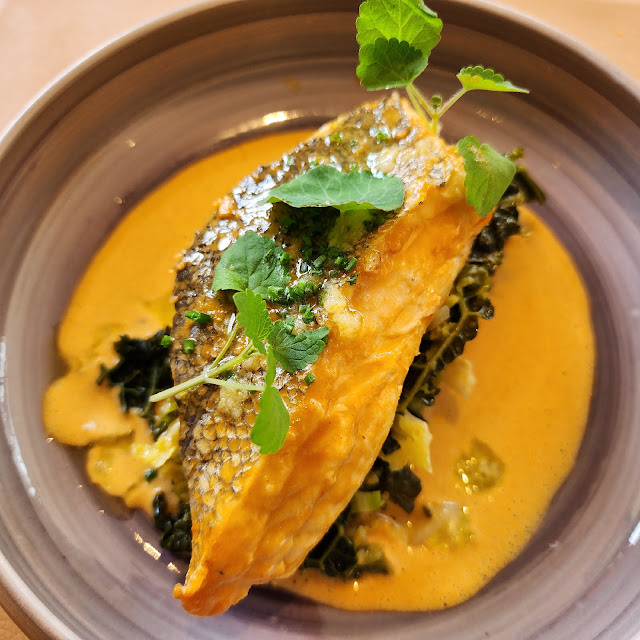Every year, thousands of tourists' travel to the sun-drenched South of France region of Provence. One of its biggest draws, field upon field of perfect rows of sweet-scented, violet-colored lavender.
There are four main regions where lavender is grown in Provence. They are the Plateau de Valensole, the Luberon Valley, Pays de Sault, and the Drome Provençale. We have visited all of these areas several times except for the Plateau de Valensole.
Last summer, with friends from Washington DC in tow, we loaded into our car in Sablet and headed out for the 122 km drive to the famous Valensole plateau to tour the lavender fields in the Alpes-de-Haute-Provence.
The lavender fields on the Valensole plateau are the most photographed in Provence. This plateau, at 500 meters elevation is dedicated to the cultivation of cereals, olive trees and lavender. The plateau extends over 800 square km and offers a breathtaking panorama of the Provencal countryside.
 |
| Lavender Field in Valensole |
Lavender attracts thousands of tourists and bees, hoping to time their visit for the peak of the flowering cycle. The precise timing of flowering changes annually, depending on the weather. Typically, some fields are in full bloom by late June, and the harvest is mostly complete by mid-August.
 |
| Lavender Field in Valensole |
There are many varieties of lavender. Although we typically associate lavender with purple flowers, the varietals include many colors, from deep blue to white. The plants love the dry, sandy, rocky soil that is typical of southern France.
 |
| Lavender Field in Valensole |
Lavender has been cultivated at least all the way back to biblical times. Lavender is referenced in the bible as a holy herb nard. The Greeks and Romans used lavender for personal hygiene and medicinal purposes. The Romans used lavender flowers to scent bath water. The flowers and essential oils have been used throughout the ensuing centuries for everything from repelling insects to treating burns to sleep therapy.
 |
| Lavender Field in Valensole |
Two main lavender varieties are grown in Provence. The “real” lavender is a small, tufted plant with a single floral spike. Each plant is unique. The plants grow naturally at elevations between 600 and 1,400 meters, but cultivation is generally above 800m. Each plant is unique.
 |
| Lavender Field in Valensole |
Lavandin is a hybrid, the result of a cross between lavender and a wild varietal, lavender aspic. It’s a hardy plant, less susceptible to disease, and it grows at lower altitudes (200 – 1,000m above sea level) than fine lavender. Since lavandin is a clone, the plants have identical biological footprints, propagated by cuttings. A single lavandin stem has three blue-purple flower spikes.
 |
| Lavender Field in Valensole |
Be forewarned, lavender season brings traffic congestion. Bus tours and cars clog typically quiet roads while their passengers walk into the lavender fields to snap selfies and photos of each other in the fields.
 |
| Lavender Field in Valensole |
Much of the lavender grown in Provence is distilled for essential oil and fragrant water. The plants are also dried for scented objects. Tourist shops in Provence carry lots of lavender products, soap, perfume, honey, tea, ice cream and scented packages. Be aware, some of the products sold in stores are mass-produced outside of France and hardly artisanal.
 |
| Lavender Field in Valensole |
Because of the size of the lavender fields, the lavender harvest is usually not done by hand. A tractor passes through the field, cutting the lavender and leaving small bundles in its wake. The cuttings then dry in the sun for 2-3 days before being gathered into giant bundles similar to large hay bales.
At the distillery, the bales are dropped into cauldrons with water where the steam passes over the flowers creating the essential oil and lavender water. To produce one liter of essential oil requires 200 kg (440 lbs) of lavender flowers.
 |
| Shirley and I on our 50th Wedding Anniversary in a Valensole Lavender Fields |
Walking through lavender fields in Provence on your wedding anniversary is about as romantic a setting as you can find in my opinion.
Just before we left California for our trip to Sablet, Shirley played her one and only pickleball game and fell and broke her wrist in 4 places. We were grateful the doctor was able to put her wrist in a cast. We were hoping it would fully heal that way but unfortunately, she had to undergo surgery a few months later.
After touring around the Valensole plateau for a few hours, we drove into the town of Valensole, to find a place to eat and drink.
 |
| Valensole |
You can find lots of guides online that identify where the prettiest shots of lavender can be found on the Valensole plateau. However, because harvest occurs at different times and growers replant fields as they age, it is not always possible to find all of the recommended locations. Yes, it was a long drive from Sablet, but worth the effort in our opinion.
If you are still searching for a house to make your home during your sojourn in Provence this year or in future years, please don't hesitate to visit our website at www.sablethouse.com You can also email me at chcmichel@aol.com



















































